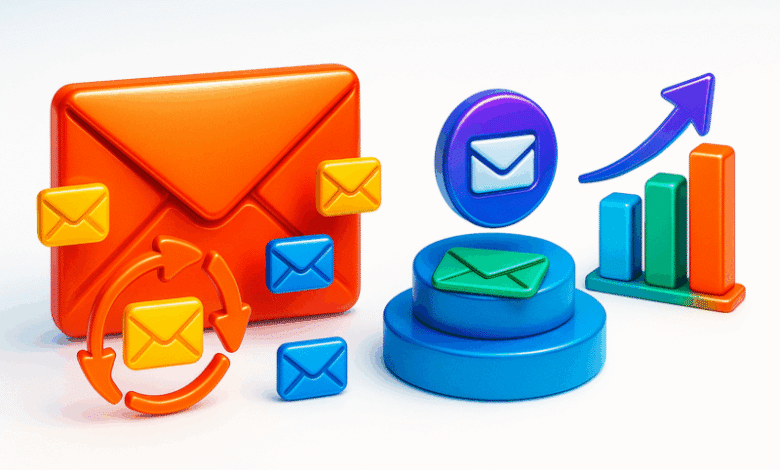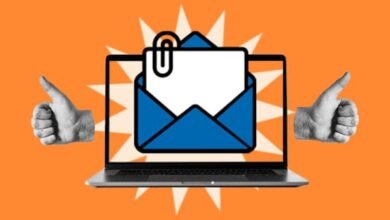5 Essential Email Lifecycle Programs & 1 to Cut Now

▼ Summary
– Email is a primary channel for lifecycle marketing to build customer trust through well-timed, relevant communications.
– Welcome and onboarding emails are crucial, with ecommerce versions showing high conversion rates and focusing on brand recall and clear actions.
– Abandoned cart emails should be timely, include abandoned items, and have a single clear call to action to complete purchases.
– Re-engagement and win-back programs help maintain email list health by targeting inactive or lapsed customers with simple, automated messages.
– Newsletters provide ongoing value and trust-building, while lead nurture programs are less effective and should be replaced by newsletters.
For businesses focused on building lasting customer relationships, email lifecycle marketing stands out as a foundational strategy. It allows you to guide individuals from their initial sign-up through to becoming loyal advocates, using timely, relevant communication. While countless touchpoints exist across the customer journey, focusing on a few core programs yields the best results, especially when resources are limited.
Welcome and onboarding emails represent your first official handshake with a new subscriber or customer. This initial communication is critical for making a memorable impression and guiding their next steps. Data from Omnisend reveals that ecommerce welcome emails achieve a remarkable 58.26% click-to-conversion rate, with half of all clickers making a purchase. To craft an effective welcome email, keep the message concise. Skip the lengthy company history and instead offer a brief reminder of your value proposition. Ensure your branding is unmistakable so the recipient instantly connects the email to their sign-up action. Most importantly, provide a single, clear next step that capitalizes on their current engagement, such as exploring content or starting a trial.
Following the welcome, an onboarding series can paint a fuller picture of your brand. The best programs prioritize education over sales, much like building a new friendship. The cadence should match your service; for a seven-day SaaS trial, for instance, sending emails within the first five to six days helps users maximize their experience. A key principle is to design each message to stand alone, never assuming the customer has seen previous communications.
Abandoned cart emails serve as a gentle nudge for customers who began a process but left before completing it. Getting the timing right is essential. Sometimes an immediate reminder works best, while in other cases, a delay of a few hours or a day feels more natural. The primary goal is to bring them back to complete their action, so the email should feature one unambiguous call-to-action. Avoid cluttering the message with social media links or unrelated offers. Clearly show the items they left behind and ensure the email complies with regulations like CAN-SPAM or GDPR by identifying itself as an advertisement and including an unsubscribe link and physical address. While multi-email sequences can work, they risk annoying uninterested parties and harming your sender reputation.
Re-engagement programs are vital for list hygiene. Inactive subscribers inevitably accumulate over time, and their lack of engagement can drag down your overall performance metrics. Since inbox providers use engagement to gauge sender quality, a poor reputation can land your emails in spam folders. An effective re-engagement campaign should be triggered by a defined period of inactivity, perhaps 30 days for a weekly sender, with 90 days as a maximum cutoff. The email itself must be simple, offering a one-click option to remain subscribed. Automating this process and reviewing its performance quarterly ensures efficiency. Be prepared for list shrinkage, as this ultimately improves overall engagement and list health.
Win-back programs target a different group: lapsed customers who have previously purchased but have since gone quiet. Retaining an existing customer is often more cost-effective than acquiring a new one, as they already know and trust your brand. A win-back email can leverage FOMO (fear of missing out) by highlighting what’s new or improved since their last interaction. Provide a straightforward path for them to re-engage, such as restarting a subscription with a special discount.
A value-driven newsletter is not a promotional bulletin but a consistent source of information, education, and insight. When you deeply understand your audience’s challenges and aspirations, you can create content that builds genuine trust. This is particularly powerful in B2B with long sales cycles involving multiple decision-makers. Beyond fostering relationships, a newsletter builds an owned audience, offering a reliable channel immune to the whims of social media algorithms and search engine updates.
One program to consider dropping is the traditional lead nurture program. The assumption that a fixed email sequence will linearly guide someone to a purchase is often flawed, especially in complex B2B sales. These nurtures frequently prioritize what the business wants to say over what the prospect needs to hear, and determining their ideal duration can be guesswork. A better alternative is a high-value newsletter, which fosters an ongoing, flexible relationship with prospects who have already expressed interest, building more trust and delivering greater long-term value.
These lifecycle programs are a starting point, not a rigid checklist. As you develop your strategy, document your processes thoroughly and commit to continuous testing. The central focus must always remain on the customer and the value they receive from every interaction.
(Source: MarTech)
